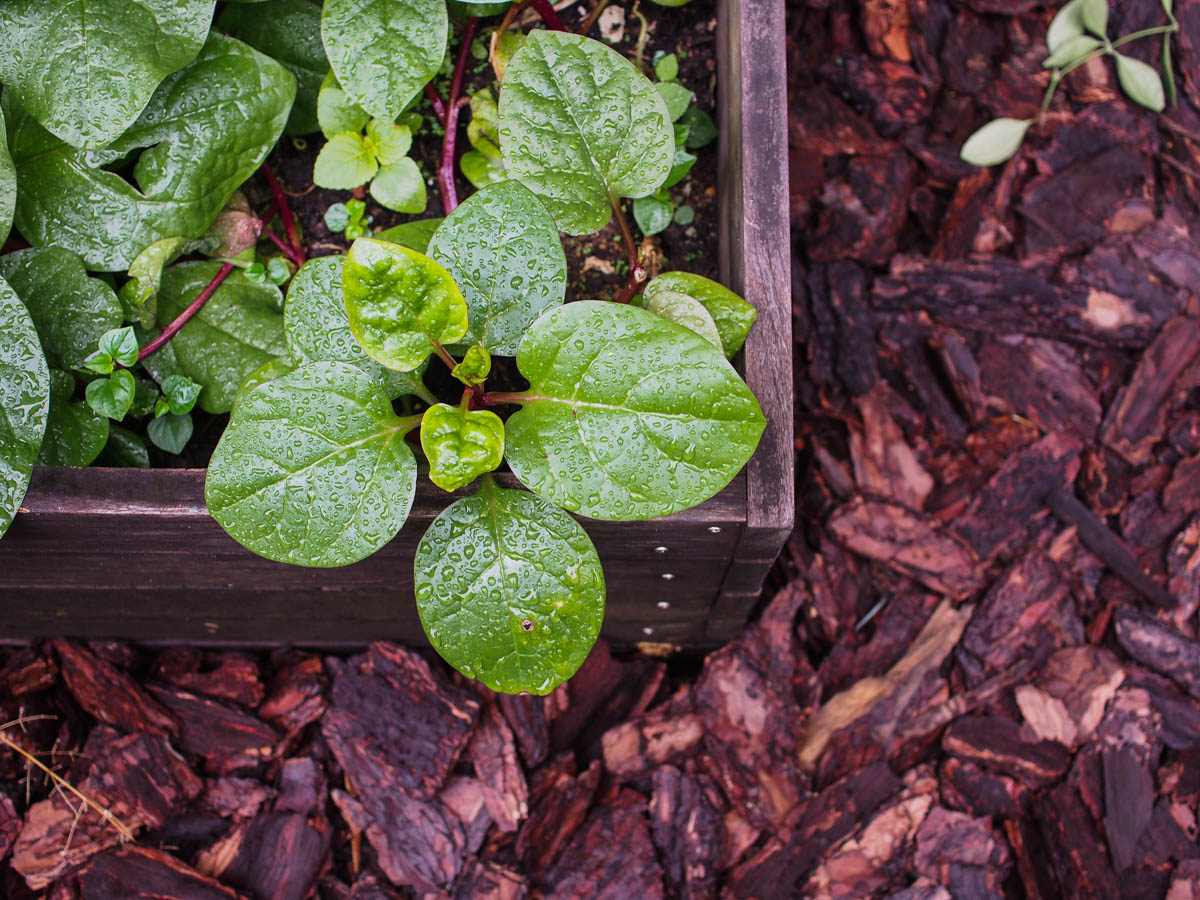Mulching
.jpg)
Mulch refers to organic or inorganic materials that are used to cover garden soil to help keep it cool and moist, prevent erosion, and to supress weeds. Mulches can be used to keep plants cool and healthy, or as a material to keep pathways weed-free. Mulching your garden is a good way to protect your plants from water loss, and using it thoughtfully can also make your garden look neat and well-managed.
Organic mulches
Organic mulches are made from living or once-living material and are generally the most eco-friendly option for the garden as they are compostable and feed soil biodiversity. However, because they do slowly decompose, they need to be replaced or topped up annually. Organic mulches should be applied and maintained as a layer 5 to 10 cm thick over the soil to get the most benefit. Mulch should not be allowed to build up over 5 cm directly next to a living plant stem as this could slowly cause the stem to rot.
-
.jpg)
Cardboard from boxes and egg trays can be used as a cheap form of mulch and will eventually break down into brown material like how they do in compost. Unfortunately, they don’t look very professional, and may blow away in the wind. Use cardboard mulch sparingly, and in secluded areas of the garden.
-
.jpg)
Cocofibre is a product made from coconut husks that often comes as a mat, as chips or as shredded material that can be applied over the soil as mulch. It is light and eco-friendly, but may be blown away in windy areas like on rooftop gardens!
-
.jpg)
Living mulches are vines, crawling groundcovers, or short and hardy plants like Kang Kong, Sweet Potato and Sissoo Spinach which shade the soil with their leaves. These plants can be gown under taller crops like Lady’s-Finger or Brinjal as part of companion planting.
-

Wood chips are waste wood pieces from untreated lumber that take a long time to break down. They are often used for decorative purposes, and can also be used to line pathways. However, they tend to be pricey, and may float away in heavy rain.
Inorganic mulches
Inorganic mulches are made from non-living materials or are man-made. They last much longer than organic materials, but are generally less eco-friendly.
-
.jpg)
Plastic sheets can be bought specifically for mulching or can be made from old canvas and other weather-resistant plastic. Do not use thin plastics that quickly break down and flake in the sun as these tiny pieces of plastic will then get mixed with your soil.
-
.jpg)
Small stones and gravel can be used as mulch or pathways and can make a garden look classy and neat. However, their weight can press on fine roots, and gardeners may accidentally kick them out of their intended area. Lightweight soil amendments like pumice are popular mulches for plants in containers.

